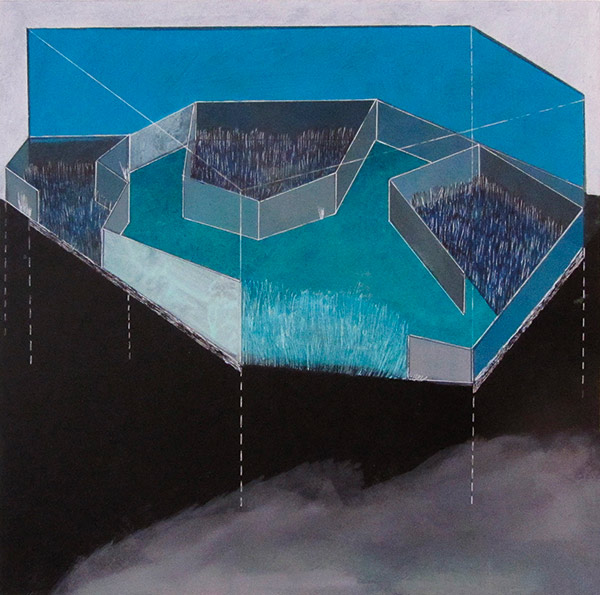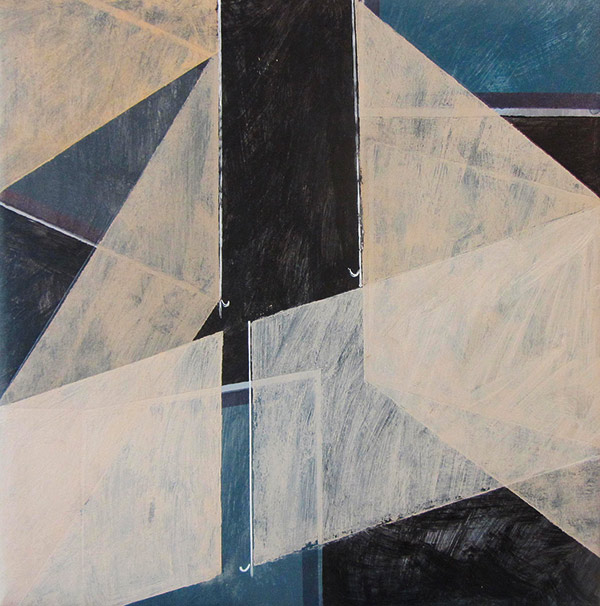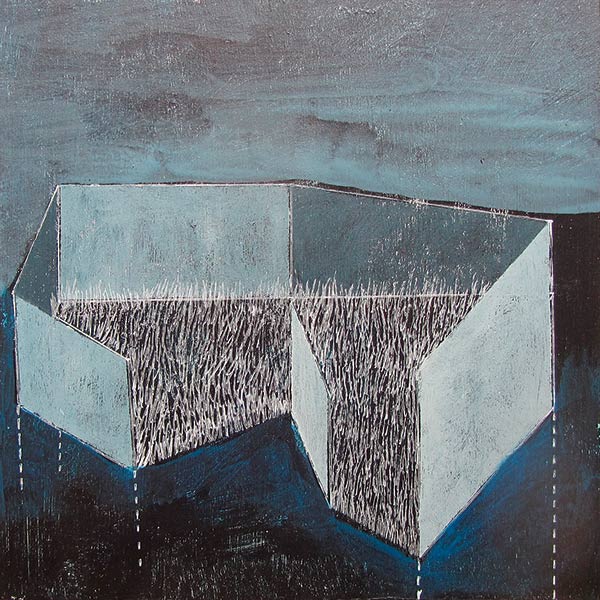Subtotal: $
Checkout-

My Mind, My Enemy
-

Demining the Sahara
-

Just Doing What Christians Do
-

Hating Sinners
-

Students Brave the Heat
-

The Witching Hour
-

Enemy Lovers
-

How God Sees Us
-

Macedonia Morning
-

Tim Keller: New York’s Pastor
-

What Is Time For?
-

Poem: “South Head, a Wild Surmise”
-

Poem: “Lammergeier”
-

Poem: “World Within”
-

When Love Seems Impossible
-

Places to Think with Neighbors
-

Letters from Readers
-

Covering the Cover: The Enemy
-

Thanksgiving Starts in September
-

The Monsignor versus the Fascists
-

Do Activists Need Enemies?
-

The Making of Martyrs
-

Visions of the Kingdom
-

Foolhardy Wisdom
-

Tough Love on the Mount

Walls behind Bars
Two friends risk defying a racist prison culture.
By Antoine E. Davis and Aaron Olson
September 8, 2023
Available languages: Español
Next Article:
Explore Other Articles:
The high walls of Washington State Penitentiary keep prisoners locked away from the public for a specified period of time, but they don’t keep out an evil that has always been a part of public life in the United States.
The vast majority of us who are locked up, no matter what our personal views might be, are forced to participate in a segregated system. Phone use, showers, dining tables, and cells are all separated by race. Groups of prisoners enforce these unwritten rules; officials not only accept but facilitate segregation. Anyone who violates these rules can face sanctions from guards or violence from other prisoners. As a black man (Antoine) and a white man (Aaron), we have each experienced this suffocating pressure.
Aaron: Forever burned into my memory is a day that I walked the prison’s big yard for a breath of fresh air. I watched as another white man finished up his exercise. A group of white prisoners also watched, waiting until he was exhausted from running several miles on the blacktop. Drenched in sweat, he walked slowly, arms in the air, opening his lungs for more oxygen. On cue, an attacker – what prisoners call a “mission boy” – emerged from a huddle of four white convicts sporting shaved heads, swastika tattoos, and small steel hammer necklaces. The designated attacker, barely twenty years old, with fuzz for facial hair, was eighteen months into a twenty-five-year sentence, and it was time to “prove himself” to the senior members of the white supremacists.
The target? Another white supremacist, but one who’d broken the rules by using a shower that belonged to black prisoners. No amount of favor gained in the past could save this young man from the consequences of breaking this cardinal rule. By using a black shower, he had openly disrespected those who enforced the rules and even risked a race riot.

Aina M. Snape, Relation Structure, acrylic on wood, 2014. All artwork used by permission.
The assault was quick and ruthless. A single sucker punch brought the man to his knees. Five more strikes to the face drove home the point. Blood poured from his nose, mouth, and eyes. Within seconds, the prison guard’s bullhorn came blaring from the gun tower, “Stop, stop fighting, get down!” Other guards rushed into the yard screaming the same orders. The mission boy dropped to his knees, lying prostrate, surrendering himself satisfactorily.
On the opposite end of the yard, the white supremacists smirked with approval.
Antoine: Of course, not all prisoners embrace these racist rules, let alone condone the violence used to enforce them. But we all face pressures to accept racial segregation. Prisoners coordinate their affiliations by skin color, and prison administrations perpetuate this system by assigning prisoners to cells with those of the same race. From the unit supervisor on down, it’s common for guards to refer to a “black cell” or a “white cell.” If prisoners somehow wind up with a cellmate of another race, most of the time prison officials will make one of them move. Prisoners who push back on such administrative decisions risk being sanctioned with a “refusal to disperse” and sent to solitary confinement. So they usually accept the segregated status quo for the sake of their own safety. Fearful and facing intimidation, many incarcerated individuals refuse to cross those lines.
My initial encounter with this fact came as Diablo, a young Hispanic man, and I shot hoops on the basketball court one day to pass the time. We laughed and conversed about family, just two men talking and enjoying one another’s company. I had multiethnic friendships before being incarcerated, as did he, and the two of us were relatively new to the prison system and weren’t thinking about racial lines. We simply saw one another as people.
As we continued to laugh and talk, nearly forgetting that we were incarcerated, I tossed the ball to Diablo, but before he could take another shot he was confronted by a Hispanic man. The guy’s face was covered with tattoos, with the number 13 on his neck in Old English lettering, a mark of the Sureños gang. Off to the side, a group of Hispanic prisoners was watching him from a distance, their appearance and behavior suggesting gang affiliation.

Aina M. Snape, Passage I, acrylic on paper, 2014.
After the man whispered into his ear, Diablo’s smile vanished, as if he had been stripped of something valuable. When the stranger passed me, he gazed at me with an arrogant expression of triumph. Diablo hung his head, reluctantly letting the ball slip from his hands. As the ball bounced and rolled toward the fence coiled with razor wire, I asked, “Hey man, where you going?” With fear in his eyes and voice, he responded, “I can’t play with you,” drifting over to the group of Hispanic prisoners who had just defined the parameters of his life.
The physical threat to anyone who fails to comply with the rules of segregation had extinguished our connection. The pressures to conform overrode our nascent friendship, encouraging him to regard me as an enemy because of my skin color.
Aaron: There’s a famous adage: “When you’re going through hell, keep going.” It was March 20, 2013, and I sat in my cell waiting for the guard to announce that it was time for recreation. The small speaker crackled, and a faint voice came over the intercom. “Olson?” came the soft call, a noticeable change from the usual commands barked at us. “Yeah?” I replied. “The CUS wants to see you in her office, please.” The intercom went silent.
An unscheduled beckoning to the correctional unit supervisor’s office is rarely a good thing, and the anxiety started. I put my shoes on and straightened my khaki top and bottom. My counselor and the CUS met me in the hallway. With grim faces, they locked eyes on me. I wondered if I was being taken to solitary confinement, fearing another long stint of isolation but masking my angst.
“It’s your mom,” said the CUS. I could guess what was coming, but I pretended not to understand, with a lump in my throat. “She passed away.”
“What?” I said, confused. “How?” I searched her eyes, empathetic for the first time in the nine months I had known her. The woman with ice in her veins mustered compassion for the moment. “I think your mom committed suicide.”
I was paralyzed. I would rather have gotten solitary confinement than this horrifying news. She added, “I think she shot herself. That’s what your sister said.” Images of my mom shooting herself immediately overwhelmed me, and I felt confined to a prison within a prison, tormented and helpless to do anything for my loved ones. “Can I make a phone call?” I asked. “Sure,” she replied. I called my sister-in-law, Anela. She answered the phone in tears, explaining that my mother had shot herself two days prior.
I went into “hope mode,” encouraging Anela and my siblings to have faith that we would make it through this. I agreed to write a eulogy, “A Mother by Trade.” I attribute my strength in that particular moment to my relationship with God. When I was hopeless, hope is what he gave me. In turn, I was able to pour hope into my family, knowing that we were in the midst of what felt like a hopeless situation. I was thankful that I was able to comfort those I love. But when I hung up the phone, I wondered who would comfort me.
In prison, news spreads faster than gossip at a Rotary club. The white supremacist shot caller (the leader of a group) came to my cell that evening. “You good?” he asked through the crack in the steel door. I nodded my head, even though I wasn’t. I knew he didn’t care about me. It was only the second time he had ever spoken to me. He soon revealed the reason for his presence.
“I need you to handle your old celly,” he continued. “He’s saying he’s Caucasian now, and not a white boy.” I knew enough to know that my old cellmate’s public announcement that he was Caucasian was his way to disassociate himself from the white supremacists. It was also a sure way to a violent exit from general population. The whites wanted to hurt him badly, and I was chosen to carry out the task. Without hesitation, I declined the demand, citing the death of my mother. The shot caller acted like he’d just heard for the first time, feigning empathy. He departed quickly to continue his search for someone to carry out his order.

Aina M. Snape, Structure III, acrylic on wood, 2014.
During the following two months not one man who aligned with the “whites” asked me if I was OK, or seemed to care about my loss. Instead, my comfort and brotherhood came from an unlikely source. Only seconds after the solicitation from the white supremacist, the intercom crackled again. “Some people want to talk to you,” it said. The intercom went silent, and the steel door began to slide open. I could see two black men standing in the large space that divides the two sides of the unit. One of them was Antoine.
Antoine: When I heard that Aaron’s mother had committed suicide, I was stricken by grief, trying to imagine what I would feel if I was in his shoes. The emotional rollercoaster left a knot the size of a boulder in my stomach. I wanted to comfort him but wondered what I could say or do under such crushing circumstances.
After another friend and I received permission from one of the guards to speak with Aaron, we went over and prayed with him. After turning to walk away, I could feel the internal tug to do more than just pray. To truly support him in a segregated culture, we would be forced to weave our way through racism and hate, exposing ourselves to the possibility of violence, a reality I was far too familiar with.
To truly support our friend in a segregated culture, we would be forced to weave our way through racism and hate.
The following days, Aaron and I walked, talked, and at times cried together. On multiple occasions we were approached by white prisoners, suggesting we cease all interactions, sometimes with threats. We knew from experience that these threats were serious.
The black prisoners, on the other hand, spoke to me more privately about my frequent interaction with Aaron. After explaining the reason behind my decision to support him, they let me be, saying that I had shown consistency in my claim to be a Christian. Some of the black prisoners made insulting comments, which I expected, but none threatened me, though I could never be too sure that I was safe.
But in spite of the danger, I couldn’t abandon a person in need on the basis of his skin color. Yes, it would have been safer to accept the prison norms. But choosing physical safety would have weighed on my conscience, and I couldn’t forget Aaron.
Before things came to a boiling point, Aaron was sent out to attend his mother’s funeral. Dressed in an orange jumpsuit and shackled with steel cuffs, he was transported by two guards to the one-hour service. When it was over, a case manager informed him that his application for a hardship transfer had been accepted – Aaron was being sent to Washington Corrections Center in Shelton. It was nice to know his hardship would bring him closer to home. Yet it was difficult to swallow the irony that getting closer to his mother, who was no longer alive, was the reason he had applied for the transfer.
Despite the circumstances, I was glad to see him leave the hell known as Washington State Penitentiary. In comparison to other prisons, WSP is a wet blanket that smothers any spark of hope.
With Aaron gone, I still used every opportunity to challenge the ignorance and hatred. I worked on removing racial barriers by plucking one brick from the wall at a time.
After spending a decade of my life in Washington State Penitentiary, I was finally transferred to Shelton, where I was reunited with Aaron.
Aaron and Antoine: While our friendship had a happy outcome, we are more troubled than ever about persistent prison racism, which hurts everyone. Safety, communication, and relationships for all prisoners suffer because of the segregated culture. Not all prisoners like it, but the threat of violence and sanctions hang over anyone who violates these rules. Even worse, the Department of Corrections, which claims to protect safety and rehabilitate prisoners, endorses racist behavior by dividing the population into black, white, and Hispanic cells and allowing other unwritten prohibitions to go unquestioned. This not only deepens racism in prison but reinforces that way of living as the norm once prisoners return home.
Our hope is that one day the leadership in the Department of Corrections will care enough to change the brutal culture within its facilities. An opportunity to challenge the larger culture’s racism is being ignored, making life more dangerous and reinforcing ideas that have destructive consequences inside or outside prison.
Already a subscriber? Sign in
Try 3 months of unlimited access. Start your FREE TRIAL today. Cancel anytime.






































Shannon
Thanking our Father for each of you submitting to Him and allowing such redemption. Beauty. God bless you both, brother's in Christ, with more from our generous Father that would bring you even closer to Him and His ways and knowledge. Thanking Holy Spirit for the privilege to pray for you as you continue to find and grow in freedom: found only In Christ.
Chris
Beautiful writing, beautiful friendship. We must do all we can to overcome racism. Everywhere. It takes courage, like these two men have in spades. God help us.
Larry Smith
Well done, gentlemen. Thank you.